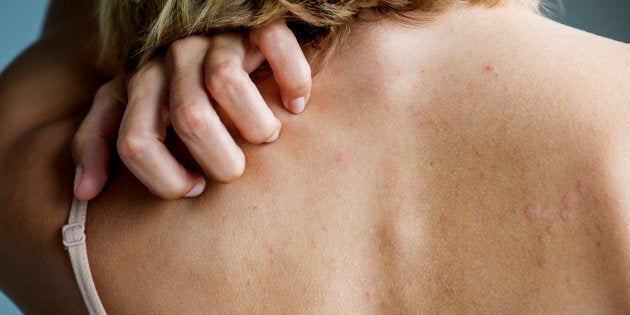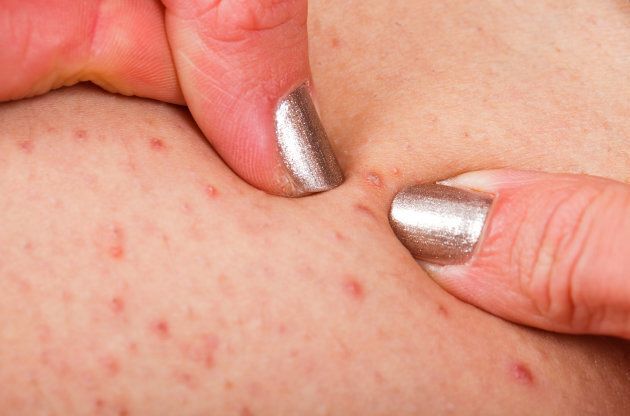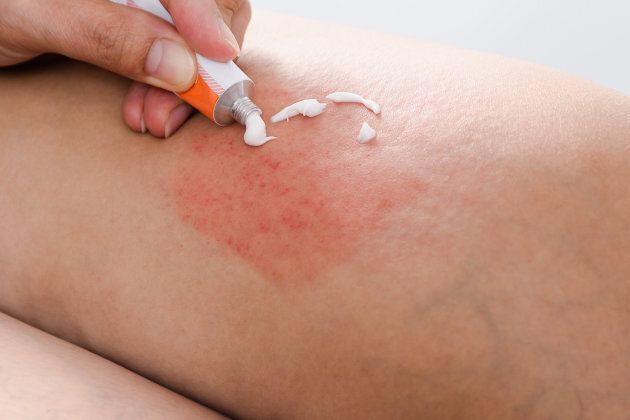
It's definitely not an easy term to pronounce — hidradenitis suppurativa (HS) — nor is it an easy condition to live with. Up to four per cent of Canadians are affected by this painful skin disease. However, dermatologist Dr. Afsaneh Alavi, a director of the Wound Healing Fellowship at Women's College Hospital in Toronto, says diagnosing the condition can often be delayed or is misdiagnosed, making it difficult to adequately assess the true prevalence of the disease.
So, what is hidradenitis suppurativa?
Hidradenitis suppurativa is a long-term skin condition that features small, painful lumps under the skin. Despite also being known as acne inversa, this condition is not a form of acne. The lumps typically develop where the skin rubs together, such as the armpits, the groin, between the buttocks and under the breasts. The lumps may break open and smell or cause tunnels under the skin, according to Dr. Alavi. With time, the lesions can be clustered with residual scarring.
I want young people who have recurrent boils in areas with sweat glands (armpit, groin, buttocks, under breasts, etc), to speak with their doctor right away as there is treatment. I want them to know that it is not their fault, and they shouldn't blame themselves. HS is not caused by poor hygiene, nor is it a sexually transmitted disease or contagious, it is genetic. Don't be affected by the stigma. If you have HS, talk about it. There is a lot of support out there.
Watch this teen talk about her experience with hidradenitis suppurativa:
What can hidradenitis suppurativa look and feel like?
Hidradenitis suppurativa often starts with a single, painful bump that persists for weeks or months. For some people, the disease progressively worsens and affects multiple areas of their body. Hidradenitis suppurativa lumps may look like the following:
Blackheads: Small pitted areas of skin containing blackheads — often appearing in pairs.
Red, tender bumps: These bumps often enlarge, break open and drain pus, which can have an odour. The bumps may itch and burn where skin rubs against skin.
Painful, pea-sized lumps: These hard lumps, which develop under the skin, may persist for years, enlarge and become inflamed.
Tunnels: Over time, tracts connecting the lumps may form under the skin. These wounds heal very slowly, if at all, and can leak pus.

Who gets them?
Hidradenitis suppurativa most commonly occurs in women between the ages of 20 and 30. The ratio of female to male is three to one, says Alavi.
The condition can be associated with several other conditions, including arthritis, severe acne, obesity, inflammatory bowel disease, Crohn's disease, metabolic syndrome and diabetes. And just another reason to ditch the cigarettes: smoking tobacco has been linked to hidradenitis suppurativa.
More from HuffPost Canada:
What causes it?
Dr. Alavi says that while the causes are mostly unknown, it is thought that HS is mainly genetic.
"There is some research that shows HS is a disease of hair follicles that has genetic and environmental causes," she says. "With heat, the pore can get clogged and a cyst will form, holding a collection of fluid, within a closed area."
The doctor adds that bacteria then accumulates in this environment and eventually the cyst ruptures and causes inflammation.
"Most of us will get ingrown hair, but people with HS are prone to chronic inflammation and recurring boils, which are painful and cause scarring," Dr. Alavi told HuffPost Canada.
The doctor says that HS is not caused by poor hygiene, nor is it a sexually transmitted disease or contagious.

When should you go to the doctor?
Patients often suffer for years without effective treatment, leaving them frustrated in addition to helpless and ashamed, said the dermatologist. It is so important that people know about this disease, and to get early medical attention, she adds.
"The average Canadian (HS) patient will see five doctors with over 17 visits spanning eight years before being diagnosed," says the Canadian Hidradenitis Suppurativa Foundation website.
Early detection is key to getting effective treatment and you should see your doctor if your condition is painful, doesn't improve in a few weeks, returns within weeks of treatment, appears in several locations and recurs often, according to the Mayo Clinic.
"If diagnosed earlier, treatment can be started right away and potentially lessen the damagethat people with this condition often experience," says Alavi.
If young people notice that they are developing recurrent boils — at least twice in a six month period — they need to speak to their doctor. Dr. Alavi says that people with HS tend to suffer from the disease for seven to nine years before being diagnosed and "this is unfortunate because of the physical and psychological impact of the disease."
And, pay attention to any new signs or symptoms as these may indicate either a recurrence or a complication of treatment.

What will a doctor do to treat it?
Depending on the severity of the disease, there are a few different treatment options. As the disease is inflammatory, in most cases patients will need both medical and surgical interventions. Medical interventions can include systemic antibiotics, topical treatments, anti-androgen (hormonal) treatment, and biologic treatment with Adalimumab — the only Health Canada-approved medication for the skin disease, says Alavi.

How can you manage it?
Patients play an important role in the management of chronic disease, particularly HS, says Dr. Alavi. They can detect flare-ups and seek treatment right away.
"It is also important that patients recognize triggers that can cause flare-ups, such as wearing tight clothing, shaving, smoking and gaining weight," she says.
It has been shown that smoking and obesity play a role in flare ups of the disease. Some patients also find that removing dairy from their diet helps, but there is no research to support this.
There's no cure for HS, so you'll have to manage the condition for life.
Also on HuffPost: How to prevent in-grown hairs.
